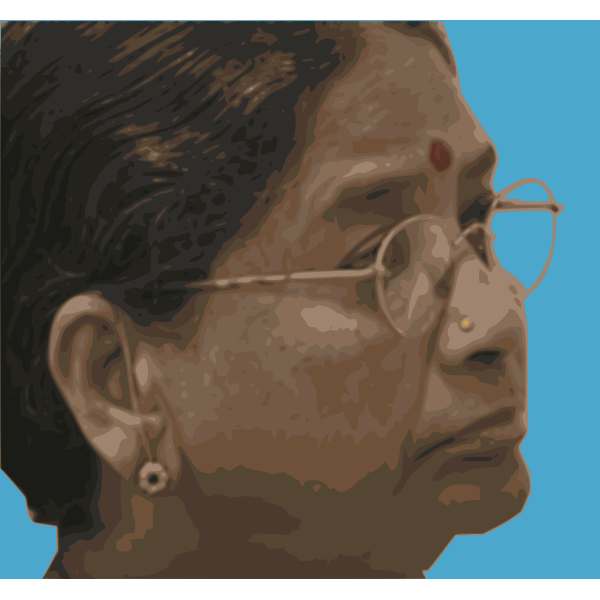For a foreigner, a bindi could mean nothing. It might at the most seem to be another piece of jewelry to enhance the beauty of the Indian woman. But did you know that even men in India wear ’tilak’ on their foreheads just like women wear a bindi? A bindi signifies different aspects for different individuals. Westerners could be wrong in their assumption on the significance of a bindi but sadly, not many Indians themselves know what a bindi really stands for. This is a result of following traditions blindly without knowing their actual meaning.
It is a common assumption that a bindi is a mark of married women.
True, married Hindu women wear the ‘red dot’ or the bindi on their forehead.
 But, not just married women but even young girls and widows wear a bindi in India. So, what does their bindi or the ‘dot’ mean?
But, not just married women but even young girls and widows wear a bindi in India. So, what does their bindi or the ‘dot’ mean?
A married woman’s red bindi indicates ‘marriage.’ Widows in India do not wear bindi normally. But they are allowed to wear a black bindi in Southern India. Their black bindi indicates their loss. However, young girls are free to wear bindi of any color. So, what does a colorful bindi mean?
Some might argue bindi is a mark of a Hindu.
But, most modern Hindu women do not wear a bindi with western clothes. Does this make them any lesser Hindu?
No.
A ‘bindi’ on a woman’s forehead or a ’tilak’ on a man’s forehead, in India, signifies the individual’s spiritual eye. This spiritual eye is also called the ‘third eye.’
This third eye in Hindus is used for spiritual sight.
Through the third eye, Hindus believe to see all that, which cannot be seen through the two physical eyes.
The bindi stands for this third eye and also protects it. A bindi reminds the Hindus of the third eye or the spiritual eye and also helps them to cultivate spiritual vision.
The Hindu saints constantly meditate by focusing their energies towards the spiritual eye.
It is believed that when the individual’s spiritual eye opens, is when he attains true enlightenment and gets closer to God. This kind of meditation, in which, energies are directed towards the third eye is not easy. This needs practice and an ordinary individual cannot concentrate for more than 2 minutes.
However, as stated above, Indians are following traditions blindly. This blind following of traditions erodes the cultural and spiritual importance of traditional practices, like that of wearing a bindi. Thus, many explanations come up for a single practice like that of wearing a bindi.
Some women in India, also think that their bindi is linked to their husbands’ prosperity. They wear bigger and bigger bindis, which they believe will bring good luck to their husbands and thus to their entire family. Some women also link the bindi on their forehead to the life of their husbands. They believe the bindi will protect their husbands from all disasters and hence give them longer life.






